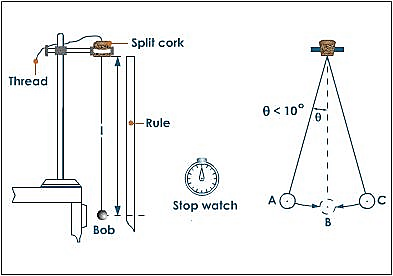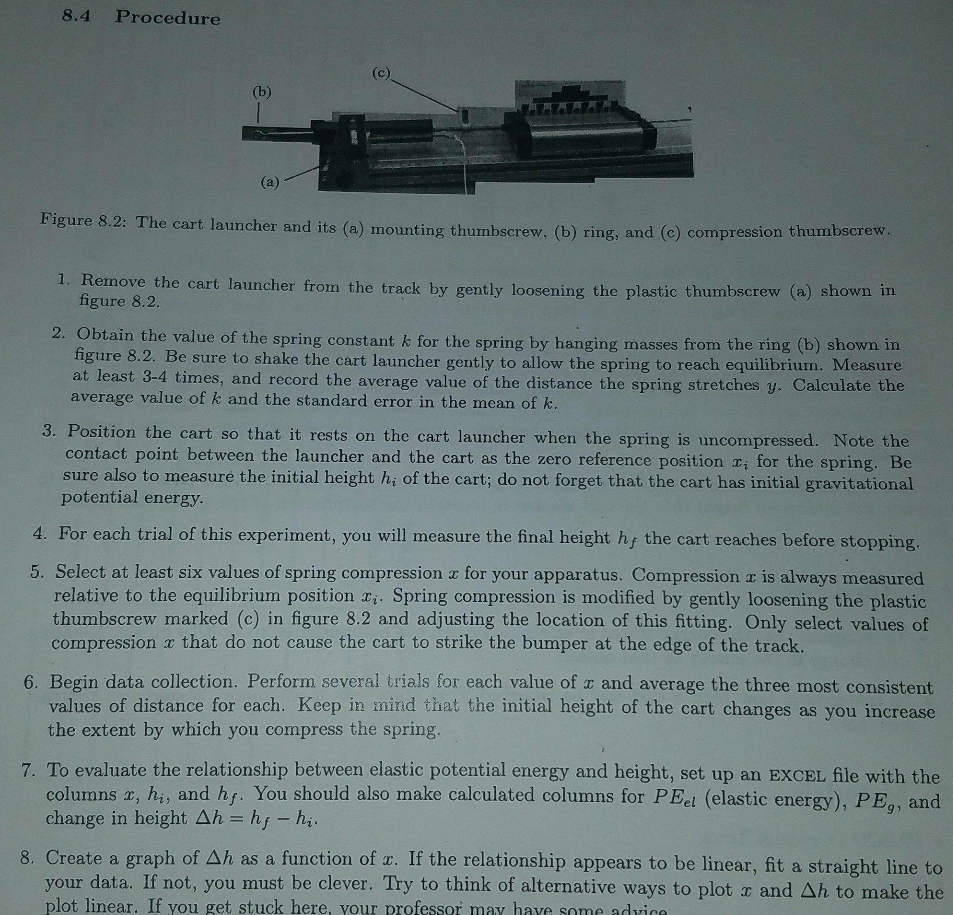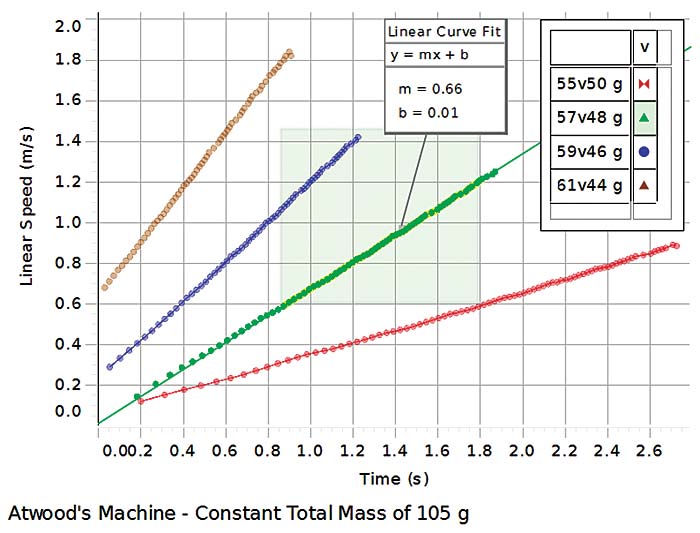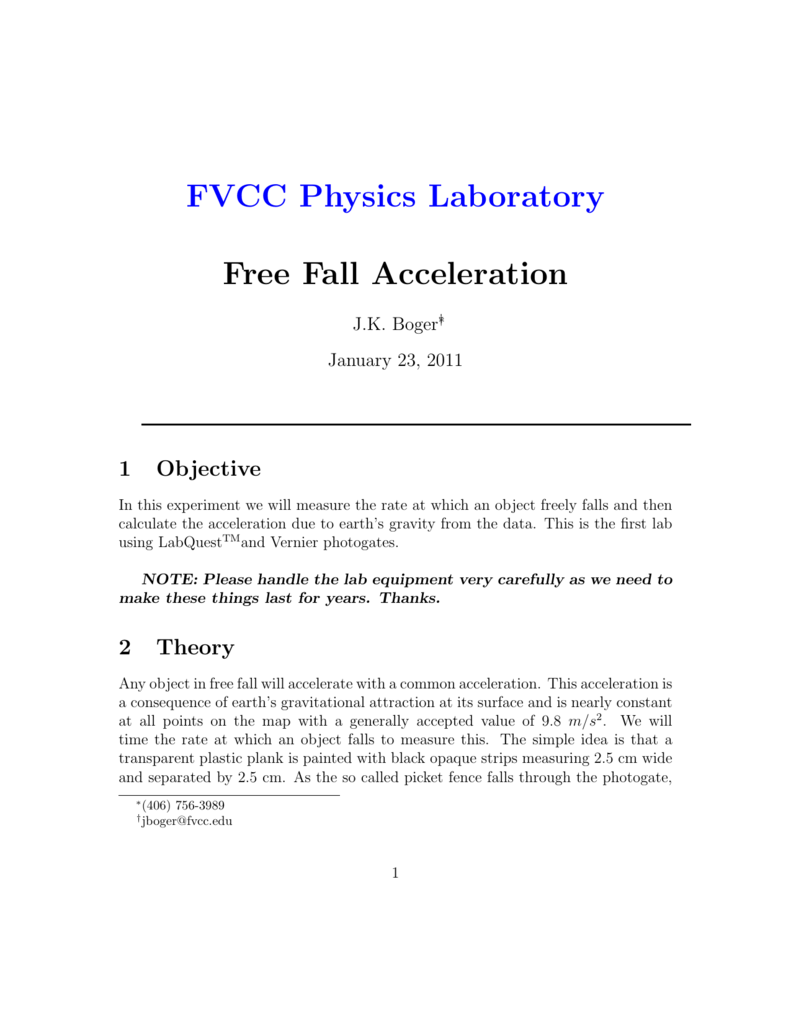

How do the two methods for determining the acceleration on a body due to Earth's gravity compare? 2. Repeat several times and tabulate your measurements to calculate the average acceleration (g) and its uncertainty. Repeat steps (1 - 4) in Part A with the following modification: Set the Smart Timer to measure Acceleration: One Gate. PASCO 850 Universal inte OOO OOOO o o AĮxperiment B: Determining the acceleration directly 1. Hardware Setup PASCO 850 Universale AL 00:00.00 Hardware Setup choose one of the Quick Start templates below. Using the relation: g = and by knowing the error in t and d as given below: t = tav to and d=dav od, you can calculate how these errors propagate to the g value, using the following relation: - 2 +(2) (5) 2d Record ti and t2 and calculate the acceleration in m/s. The Picket Fence must pass close to the LED that emits the photogate beam 5. The Picket Fence must be dropped so the 5 cm marks cut the photogate beam.


One intethod to improve the drop is to hold the edge of the Picket Fence with a cloths pin or binder clip and drop the fence by squeezing the clothespin or clip. The Picket Fence must be dropped at app0° angle to the photogate beam in such a way that it does not rotate on the way down. Note: Three conditions must be met for greatest accuracy: a. Hold the Smart Timer Picket Fence in a position so it will drop vertically through the photogate and so the 5 cm fence will block the photogate beam as the fence drops through the photogate. Insert the plug of the photogate into channel 1 or 2 of the Smart Timer, and set up the Smart Timer to measure Time, Fence. Mount the photogate on a stand or hold the Photogate steady so it is parallel to the floor, as shown in Figure 1 2. Procedure Experiment A: Determining the acceleration from time and distance measurements 1. The slope of the graph of average velocity versus time gives the acceleration of the falling object. Using the known distance between the leading edge of each band, and the time interval between photogate blocks, the student calculates the average velocity of the Picket Fence for each interval. Each opaque band blocks the photogate beam, and the time from one blockage to the next becomes shorter as the velocity of the falling Picket Fence increases. A Picket Fence is a clear plastic strip with uniformly spaced opaque bands.
#Acceleration due to gravity lab report data using photogate free#
(1) In this experiment, you will use Free fall Picket Fence Pasco setup. Items Photogate Picket Fence Mounting Rod Table Clamp Multi-Clamp 90-cm Rod No Bounce Pad Pieter Muslume Rod Picket Fence Initial Position Isold in Center Fig. The difficulty in verifying experimentally these laws comes from the fact that g has a large value, thus the falling times for typical laboratory distances is quite small (less than 0.5 s). For UEA g -9.787 m/s Equations of motion above, state that an object falls a distance proportional to the square of the time. At the poles gpoles - 9.832 m/s and at the equator gequator - 9.780 m/s.

It depends on latitude and altitude of the place. Assuming that the object is falling freely from rest and considering the positive direction of the y axis to be in the direction of the falling motion, we can rewrite the above equations (1) and (2) as follow: y 1/2gt².(3) vagt (4) The acceleration g has a constant value for a certain place on the globe. To calculate the acceleration for an object in free fall, the equations of motions are given by: y = v.t-1/2gt2 -01) T v=vo - gt (2) Where y is the distance traveled by the object in time t, v, is the initial velocity, v is the velocity reached by the object at this time t and g is the acceleration due to gravity. The acceleration may be calculated from measurements of distance and time, or it can be measured directly. With the Smart Timer, the acceleration due to Earth's gravity can be quickly determined experimentally. Theory: The accepted value for the acceleration due to gravity on the Earth's surface is 9.8 m/s. You will also be evaluating the accuracy and precision of three different experiments. Transcribed image text: Free Fall of Objects Acceleration Due to Gravity Objectives: The purpose of this lab is to measure the acceleration due to gravity of a falling object assuming that the only force acting on the object is the gravitational force.


 0 kommentar(er)
0 kommentar(er)
